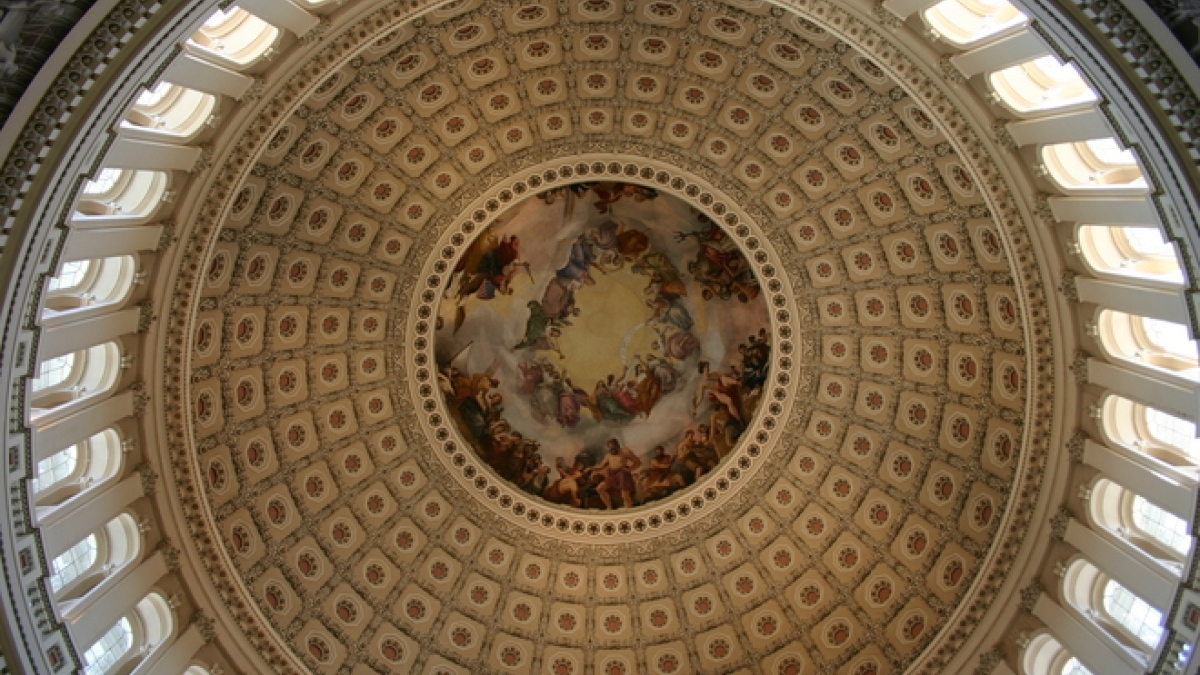Q&A: ASU Law professor says stakes 'quite high' in Supreme Court redistricting case

The U.S. Supreme Court is expected to take up a redistricting case from Wisconsin where a voting rights group says the boundaries of the state Legislature were illegally drawn to give Republicans an advantage.
ASU Law Professor David Gartner says “this will be one of the most important Supreme Court cases we’re going to see in the coming year.”
Redistricting has been in the political spotlight since Republicans have dominated elections since maps were redrawn in 2010. The case pivots on whether a district drawn along politically partisan lines violates federal laws meant to ensure fair access to the political process — a principle commonly referred to as “one person, one vote.”
The state of Wisconsin is fighting the case, saying its process was fair. Meanwhile, 12 GOP-led states, including Arizona, filed supporting briefs Monday.
A Supreme Court ruling one way or the other could have a political ripple that gives an advantage to one party or the other, and ASU’s Gartner, a faculty co-director in the Center for Law and Global Affairs and a professor at ASU’s Sandra Day O’Connor College of Law, says the stakes “are quite high.”
ASU Now sat down with him for a Q&A to better understand what’s going on and why:
ASU Law Professor David Gartner
Question: Because this is such a difficult topic to understand, perhaps a simple definition of what gerrymandering is might be in order.
Answer: It sounds like a straightforward question, but in one way it’s a complicated question given that the Supreme Court is trying to wrestle with this right now.
In its extreme version, these are districts that are meandering or irregular, or which ignore traditional redistricting criteria such as preservation of local government boundaries. In the case of partisan redistricting they are usually executed to partisan advantage.
There are other examples of redistricting as well, but the case coming before the Supreme Court pertains to partisan redistricting.
Q: Historically, didn’t this practice have a different intended purpose?
A: Historically, it had the same purpose and a different purpose. The term gerrymandering goes back to Massachusetts when Elbridge Gerry was the governor in 1812, and he used this to benefit for partisan reasons in what was then the Democratic-Republican Party.
When these maps in the Boston area were so contorted, people thought they represented a salamander and from that evolved the word “gerrymandering.”
It is also true that, particularly in the 20th century, they were used to exclude African-American voters from meaningful representation.
Indeed, some of the most significant cases before the Supreme Court around redistricting are about racial gerrymandering. On that issue, there are fairly clear standards. But the case coming before the Supreme Court out of Wisconsin about partisan redistricting, they haven’t found clear standards.
In the ViethVieth v. Jubelirer arose from the redistricting of Pennsylvania’s congressional districts by Republicans following the 2000 census. In 2004, the Supreme Court ruled that partisan gerrymandering claims were not capable of being settled by law or by the action of a court because no manageable standards for settling existed. The judgement upheld a lower-court ruling in favor of the defendants and determined the act was not unconstitutional. case out of Pennsylvania, the key swing vote was Justice Anthony Kennedy. He was very concerned about the districts drawn to partisan advantage, but he said he couldn’t find a manageable standard for the Supreme Court to apply.
The question now will be, “Has that standard been found or is it available?”
Q: As you mentioned, many other states are grappling with this issue. Are they also coming before the Supreme Court?
A: There are a number of different cases — one out of Texas, one out of North Carolina — and the Supreme Court has not yet decided whether or not it will hear those cases.
It should be noted a number of those cases are more linked to previous Supreme Court cases on racial redistricting. The Wisconsin case is the clearest example the court will have to find a new standard for dealing with partisan gerrymandering.
Q: Speaking of partisan politics, it appears as if the Republicans have used this tactic more often and to their greater advantage than Democrats. Is that accurate?
A: The reality is that it’s used by both parties. The other reality is that most legislatures are now controlled by the Republican Party, which is what gives rise to that appearance.
The other thing to know is that in some states, and even here in Arizona, there is independent redistricting where it has been taken and insulated somewhat from partisan approaches.
In our case, there’s been a commission that was established by the people of Arizona. As a result, Arizona has a disproportionate share of competitive congressional seats.
Q: What do you think will happen with the Supreme Court case out of Wisconsin, and what it could mean for the rest of the country?
A: I think it will be really interesting. What the court below proposed or at least took seriously in its analysis is something called an “efficiency-gap approach.” An efficiency gap tries to measure two different things: cracking and packing.
Cracking is when voters are divided across many districts.
Packing is when voters are concentrated to just a few districts.
The idea is to try and get a sense of whether the number of seats controlled by each party is reflective of the statewide share of votes each party receives and compares the two parties on the value of efficiency gap.
One of the big questions will be is, “What does the Supreme Court think of that approach?” It’s potentially a standard they could apply not only in Wisconsin but in many other states.
The other question will be more than a decade after the Vieth decision where Justice Kennedy said he was concerned about this problem but didn’t see a solution is, “Has the level of concern risen to the level where he or other justices might contemplate other solutions or standards to apply?”
Some of those were considered but then rejected in that case.
Certainly, the efficiency gap is a new one for them to take a look at, and there might be others as well.
Q: Why does this matter?
A: The framers of our Constitution wanted the House of Representatives to be the “People’s House” — an institution most reflective of the people of a given state or locality.
The reason why this is a big deal is because in many states today politicians shape who their constituents are rather than what the framers wanted, which is that constituents have this close relationship with members of the House of Representatives and can hold them accountable.
The stakes I think are quite high, and this will be one of the most important Supreme Court cases we’re going to see in the coming year.
More Law, journalism and politics

ASU Law to honor Africa’s first elected female head of state with 2025 O’Connor Justice Prize
Nobel Peace Prize laureate Ellen Johnson Sirleaf, the first democratically elected female head of state in Africa, has been named the 10th recipient of the O’Connor Justice Prize.The award,…

Native Vote works to ensure the right to vote for Arizona's Native Americans
The Navajo Nation is in a remote area of northeastern Arizona, far away from the hustle of urban life. The 27,400-acre reservation is home to the Canyon de Chelly National Monument and…

New report documents Latinos’ critical roles in AI
According to a new report that traces the important role Latinos are playing in the growth of artificial intelligence technology across the country, Latinos are early adopters of AI.The 2024 Latino…
